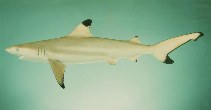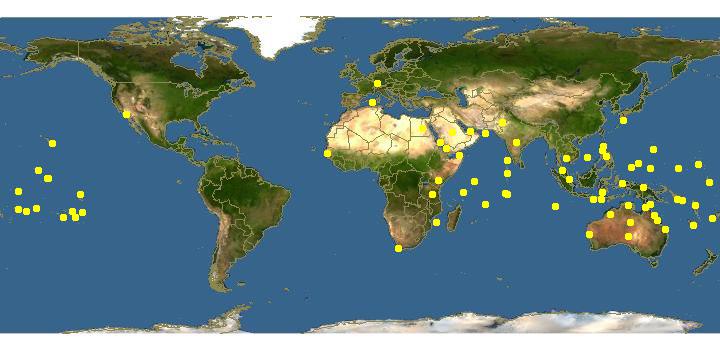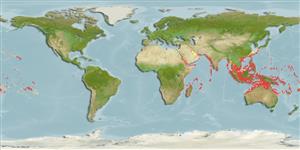http://www.fishbase.org/Summary/speciesSummary.php?genusname=Carcharhinus&speciesname=melanopterus ---> http://52.67.158.155/Summary/speciesSummary.php?genusname=Carcharhinus&speciesname=melanopterus
http://52.67.158.155/Summary/speciesSummary.php?genusname=Carcharhinus&speciesname=melanopterus ---> https://fishbase.net.br/Summary/speciesSummary.php?genusname=Carcharhinus&speciesname=melanopterus
https://fishbase.net.br/Summary/speciesSummary.php?genusname=Carcharhinus&speciesname=melanopterus ---> https://fishbase.net.br/summary/Carcharhinus-melanopterus.html
Carcharhinus melanopterus, Blacktip reef shark : fisheries, aquarium

You can
sponsor
this page
Common name (e.g. trout)
Genus + Species (e.g. Gadus morhua)
-

-
About this page
-
Languages
-
User feedbacks
-
Citation
-
Uploads
-
Related species
-


 Blacktip reef shark
Add your observation in
Fish Watcher
Upload your
photos
and
videos
Blacktip reef shark
Add your observation in
Fish Watcher
Upload your
photos
and
videos
Pictures
|
Videos |
Stamps, Coins Misc.
|
Google image
 Carcharhinus melanopterus
Carcharhinus melanopterus
Picture by
Randall, J.E.
Elasmobranchii (sharks and rays) >
Carcharhiniformes
(Ground sharks) >
Carcharhinidae
(Requiem sharks)
Etymology:
Carcharhinus:
karcharos
(Gr.), sharp or jagged;
rhinus
, an ancient name for sharks, from
rhine
(Gr.), rasp, both words alluding to a shark's jagged, rasp-like skin. (
See ETYFish
)
;
melanopterus:
melanos
(Gr.), black;
pterus
, from
pteron
(Gr.), fin, referring to its black-tipped fins. (
See ETYFish
)
.
More on authors:
Quoy
&
Gaimard
.
Environment: milieu / climate zone / depth range / distribution range
Ecology
Marine; brackish; reef-associated; amphidromous (Ref.
51243
); depth range 0 - 75 m (Ref.
37816
). Subtropical; 35°N - 25°S, 7°E - 134°W
Indo-Pacific: Persian Gulf (Ref.
68964
), Red Sea and East Africa to the Hawaiian Islands and the Tuamoto Archipelago. North to Japan and south to Australia. Apparently rare or absent in the more easterly groups. Also eastern Mediterranean (through the Suez Canal).
Length at first maturity / Size / Weight / Age
Maturity: L
m
102.0
, range 91 - 120 cm
Max length : 200 cm TL male/unsexed; (Ref.
5578
)
Dorsal
spines
(total): 0;
Dorsal
soft rays
(total): 0;
Anal
spines
: 0;
Anal
soft rays
: 0. A small shark with a short, bluntly rounded snout, oval eyes, and narrow-cusped teeth; 2nd dorsal fin large; no interdorsal ridge (Ref.
5578
). Yellow-brown above, white below; all fins conspicuous with black or dark brown tips also anterior and posterior dark edging on pectoral fins and upper lobe of caudal fin; a prominent black tip of first dorsal fin set off abruptly by a light band below it; a conspicuous dark band on flanks, extending rearward to pelvic fins (Ref.
9997
).
Inhabits shallow water close inshore on coral reefs and in the intertidal zone (reef flats), near reef drop-offs and close offshore (Ref.
244
,
58302
). Also found in mangrove areas, moving in and out with the tide (Ref.
6871
) and even in fresh water, but not in tropical lakes and rivers far from the sea (Ref.
9997
). Occurs singly or in small groups (Ref.
244
,
54301
). Prefers fishes but also feeds on crustaceans, cephalopods and other mollusks (Ref.
6871
). Viviparous (Ref.
50449
). May become aggressive to spear fishers and has been reported to bite people wading in shallow water (Ref.
6871
). Reported to cause poisoning (Ref.
4690
). 2 to 4 young of 46 to 52 cm are born per litter (Ref.
1602
). Generally marketed fresh (as fillet), may be dried, salted, smoked (Ref.
5284
) or frozen (Ref.
9987
). Fins are valued for shark-fin soup (Ref.
9987
); liver as source of oil (Ref.
9997
). This species is commonly seen in public aquaria (Ref.
54301
). Maximum reported weight from IGFA was 13.550 kg (Ref.
40637
). Minimum depth reported taken from Ref. 128797.
Viviparous, placental (Ref.
50449
). Litter size 2-4 pups (Ref.
244
) after an 8-9 months gestation period (up to 16 months in some localities) (Ref.58048). Size at birth ranges from 33-52 cm (Ref.
244
); 48-50 cm TL (Ref.58048). Distinct pairing with embrace (Ref.
205
). Precopulatory and courtship involve the male closely following near the female's vent which could possibly be guided by their sense of smell (Ref.
49562
,
47987
).
Compagno, L.J.V.
, 1984. FAO Species Catalogue. Vol. 4. Sharks of the world. An annotated and illustrated catalogue of shark species known to date. Part 2 - Carcharhiniformes. FAO Fish. Synop. 125(4/2):251-655. Rome: FAO. (Ref.
244
)
IUCN Red List Status (Ref.
130435
)
Vulnerable (VU)
(A2bcd); Date assessed:
15 July 2020
CITES
Appendix II:
International trade monitored
Not Evaluated
Threat to humans
Traumatogenic (Ref.
4690
)
Human uses
Fisheries: commercial; aquarium: public aquariums
FAO - Publication:
search
|
FishSource
|
Sea Around Us
More information
Countries
FAO areas
Ecosystems
Occurrences
Introductions
Stocks
Ecology
Diet
Food items
Food consumption
Ration
Common names
Synonyms
Metabolism
Predators
Ecotoxicology
Reproduction
Maturity
Spawning
Spawning aggregation
Fecundity
Eggs
Egg development
Age/Size
Growth
Length-weight
Length-length
Length-frequencies
Morphometrics
Morphology
Larvae
Larval dynamics
Recruitment
Abundance
BRUVS
References
Aquaculture
Aquaculture profile
Strains
Genetics
Electrophoreses
Heritability
Diseases
Processing
Nutrients
Mass conversion
Collaborators
Pictures
Stamps, Coins Misc.
Sounds
Ciguatera
Speed
Swim. type
Gill area
Otoliths
Brains
Vision
Tools
Bio-Quiz
|
E-book
|
Field guide
|
Identification keys
|
Length-frequency wizard
|
Life-history tool
|
Point map
|
Classification Tree
|
Catch-MSY
|
Special reports
Check for Aquarium maintenance
|
Check for Species Fact Sheets
|
Check for Aquaculture Fact Sheets
Download XML
Summary page
|
Point data
|
Common names
|
Photos
Internet sources
AFORO (otoliths) |
Aquatic Commons
|
BHL
|
Cloffa
|
BOLDSystems
|
Websites from users
|
Check FishWatcher
|
CISTI
|
Catalog of Fishes
:
genus
,
species
|
DiscoverLife
|
DORIS
|
ECOTOX
| FAO - Publication:
search
|
Faunafri
|
Fishipedia
|
Fishtrace
| GenBank:
genome
,
nucleotide
|
GloBI
|
Google Books
|
Google Scholar
|
Google
|
IGFA World Record
|
MitoFish
|
National databases
|
Otolith Atlas of Taiwan Fishes
|
Public aquariums
|
PubMed
|
Reef Life Survey
|
Socotra Atlas
|
Tree of Life
| Wikipedia:
Go
,
Search
| World Records Freshwater Fishing |
Zoological Record
Estimates based on models
Preferred temperature (Ref.
123201
): 23.8 - 28.4, mean 27.4 °C (based on 397 cells).
Phylogenetic diversity index (Ref.
82804
): PD
50
= 0.5000 [Uniqueness, from 0.5 = low to 2.0 = high].
Bayesian length-weight: a=0.00457 (0.00244 - 0.00856), b=3.04 (2.89 - 3.19), in cm total length, based on LWR estimates for this species & Genus-body shape (Ref.
93245
).
Trophic level (Ref.
69278
): 3.9 ±0.4 se; based on diet studies.
Generation time: 4.4 ( na - na) years. Estimated as median ln(3)/K based on 1
growth studies.
Resilience (Ref.
120179
): Low, minimum population doubling time 4.5 - 14 years (Fec=2).
Prior r = 0.26, 95% CL = 0.14 - 0.48, Based on 3 stock assessments.
Fishing Vulnerability (Ref.
59153
): High vulnerability (57 of 100).
Price category (Ref.
80766
):
Medium
.
Nutrients (Ref.
124155
): Calcium = 4.73 [0.83, 25.13] mg/100g; Iron = 0.387 [0.096, 1.146] mg/100g; Protein = 23 [20, 25] %; Omega3 = 0.162 [0.059, 0.403] g/100g; Selenium = 13.5 [4.1, 39.5] μg/100g; VitaminA = 28.8 [9.3, 88.9] μg/100g; Zinc = 0.468 [0.221, 0.937] mg/100g (wet weight);
Back to Search
Random Species
Back to Top
Accessed through:
Not available
FishBase mirror site :
Laguna, Philippines
Page last modified by :
mrius-barile
|






